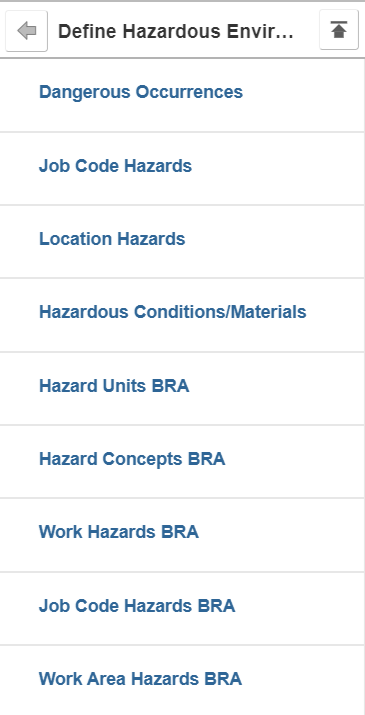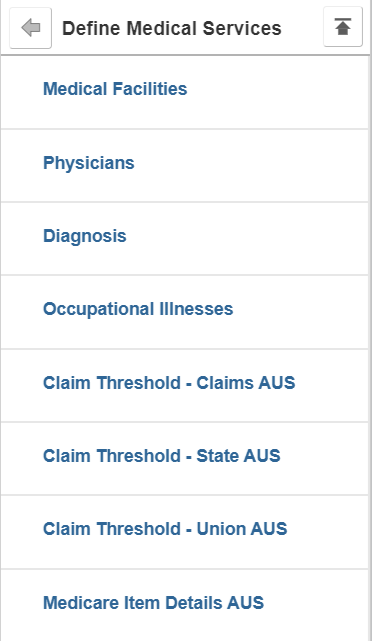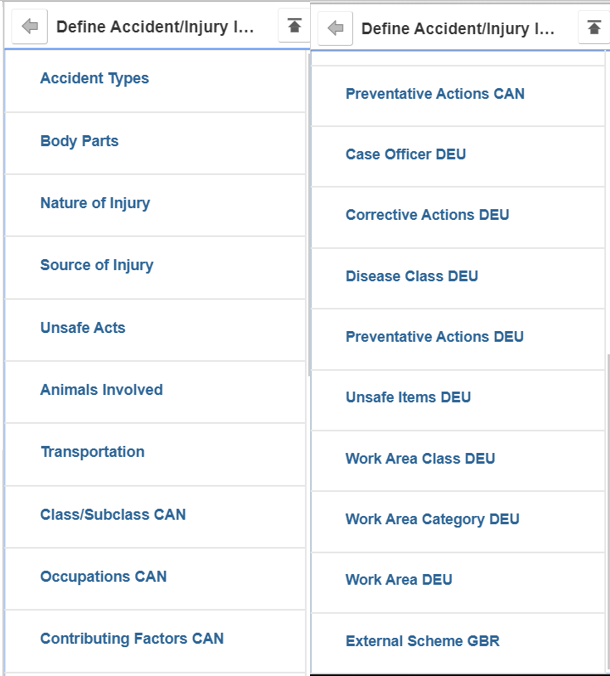Prior to leveraging H&S information and logging incidents, we must first setup our data to support our internal tracking and government regulation reporting.
From PeopleBooks:
Consistent and uniform data collection is an important element of an organization’s health and safety program. Standardized records best utilize the information that you use to manage a health and safety program and to meet government and insurer reporting requirements.
Use Monitor Health and Safety to track information specific to health and safety incidents and to update codes and descriptions as government regulations change. Most of the setup tables are designed so that you can enter multiple occurrences of a code or description.
When you create information in these tables, enter effective dates that are before the effective dates of any incidents that you enter. Otherwise, all the valid codes do not appear in prompt lists on the Monitor Health and Safety pages.
The setup date includes:
• Define Hazardous Environments
• Define Medical Services
• Define Medical Data
• Define Work Restrictions
• Define Accident/Injury Information
Hazardous Environments: Hazard control involves identifying workplace hazards and acting to eliminate or minimize any workplace hazard or exposure that risks the health and safety of personnel.
Once you establish codes for them, track hazardous materials and conditions by job code and location to identify employees who are at risk.

Define Medical Services: Defines physicians, lab services, medical locations.

Define Medical Data: Defines specific medical data around allergies, immunizations and medication.

Define Work Restrictions: When employees return to work after an injury or illness and are not able to immediately return to their full job duties, you can track rehabilitation plans that are established for them by using the codes that you set up in these tables.

Define Accident/Injury Information: Certain setup codes in the Monitor Health and Safety business process are entered by Set ID because they can vary by regulatory region. You can establish different sets of codes for each regulatory region in which you have operations.
For example, if you are administering a U.S. workforce, you may choose to use the standard codes the American National Standards Institute (ANSI) has established or establish new ones. Use the codes required by local authorities in a regulatory region, if a specific set of codes is required.
Whereas occupational injuries are generally thought to result from sudden or one-time incidents, occupational illnesses are generally thought to result from longer-term, repeated exposures. The Occupational Illness code is used on the Injury Details – Description page and the DEU Illness Tracking – Medical Details page.

The overall business process includes setting up all the required data in advance of establishing an injury incident as defined below. There is also specific information that can be setup to support Canada, Germany, Great Britain, Mexico and Australia.

As always, if you have any questions or need any additional information, please email me at Larry.zagata@miproconsulting.com. To read more about MIPRO Consulting, click here.


